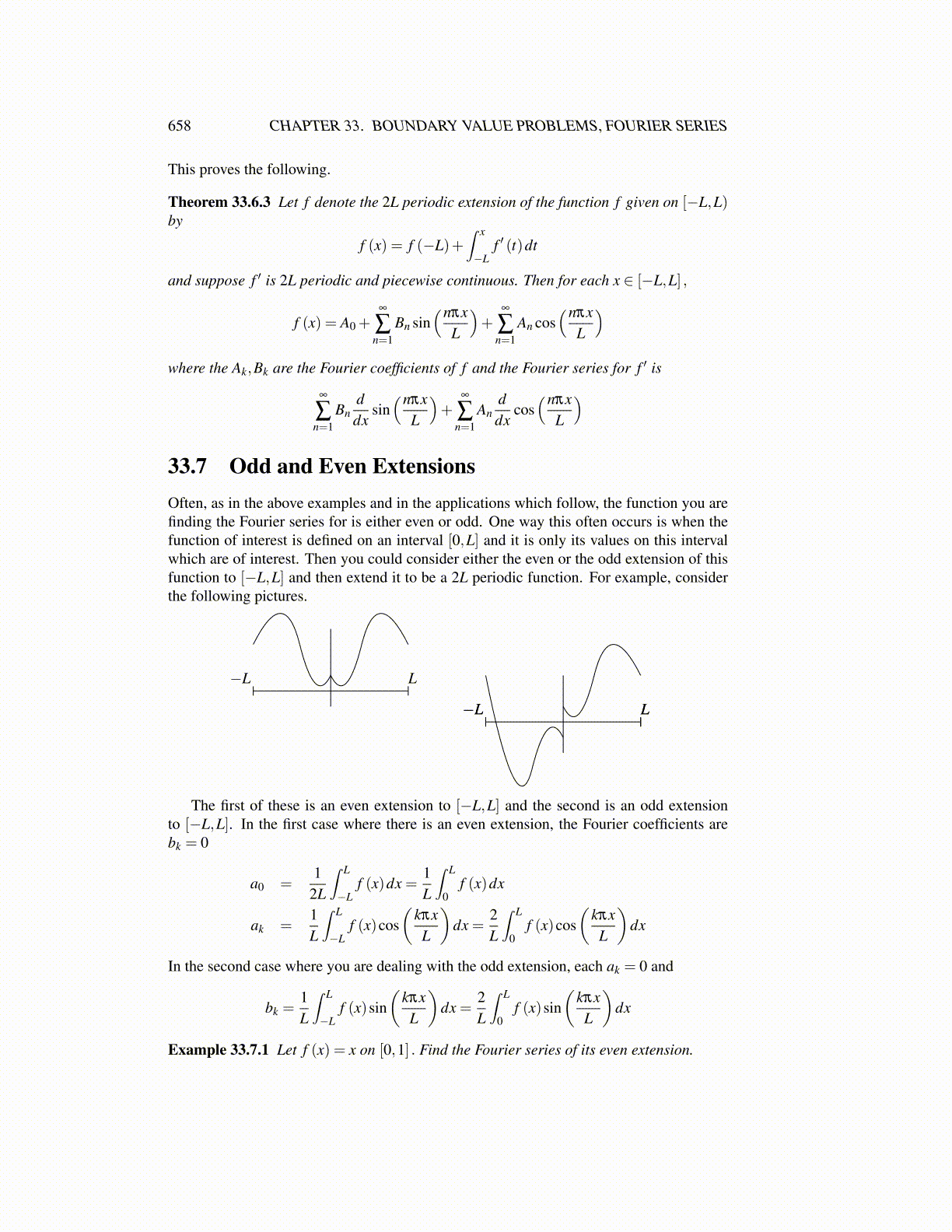
658 CHAPTER 33. BOUNDARY VALUE PROBLEMS, FOURIER SERIES
This proves the following.
Theorem 33.6.3 Let f denote the 2L periodic extension of the function f given on [−L,L)by
f (x) = f (−L)+∫ x
−Lf ′ (t)dt
and suppose f ′ is 2L periodic and piecewise continuous. Then for each x ∈ [−L,L] ,
f (x) = A0 +∞
∑n=1
Bn sin(nπx
L
)+
∞
∑n=1
An cos(nπx
L
)where the Ak,Bk are the Fourier coefficients of f and the Fourier series for f ′ is
∞
∑n=1
Bnddx
sin(nπx
L
)+
∞
∑n=1
Anddx
cos(nπx
L
)
33.7 Odd and Even ExtensionsOften, as in the above examples and in the applications which follow, the function you arefinding the Fourier series for is either even or odd. One way this often occurs is when thefunction of interest is defined on an interval [0,L] and it is only its values on this intervalwhich are of interest. Then you could consider either the even or the odd extension of thisfunction to [−L,L] and then extend it to be a 2L periodic function. For example, considerthe following pictures.
L−L
L−L L−L
The first of these is an even extension to [−L,L] and the second is an odd extensionto [−L,L]. In the first case where there is an even extension, the Fourier coefficients arebk = 0
a0 =1
2L
∫ L
−Lf (x)dx =
1L
∫ L
0f (x)dx
ak =1L
∫ L
−Lf (x)cos
(kπxL
)dx =
2L
∫ L
0f (x)cos
(kπxL
)dx
In the second case where you are dealing with the odd extension, each ak = 0 and
bk =1L
∫ L
−Lf (x)sin
(kπxL
)dx =
2L
∫ L
0f (x)sin
(kπxL
)dx
Example 33.7.1 Let f (x) = x on [0,1] . Find the Fourier series of its even extension.